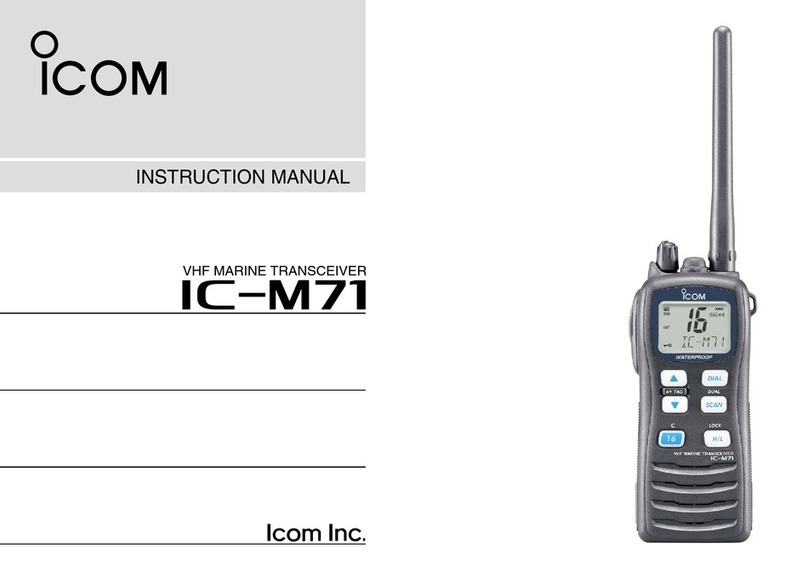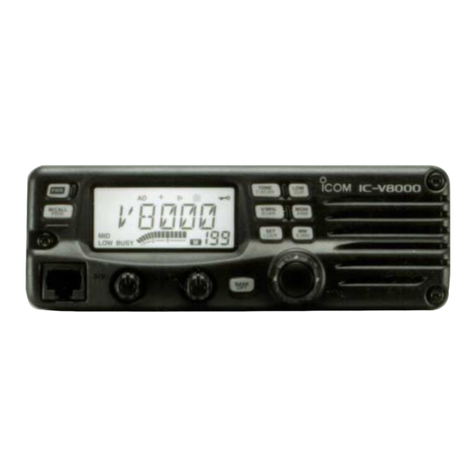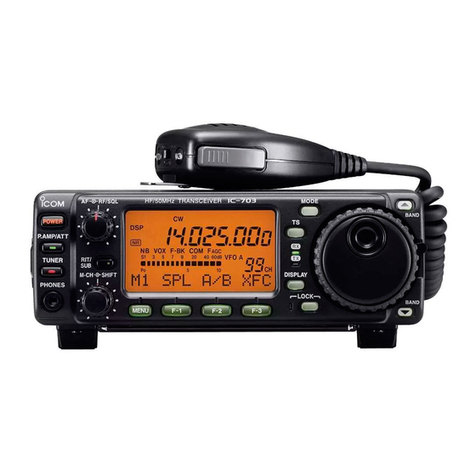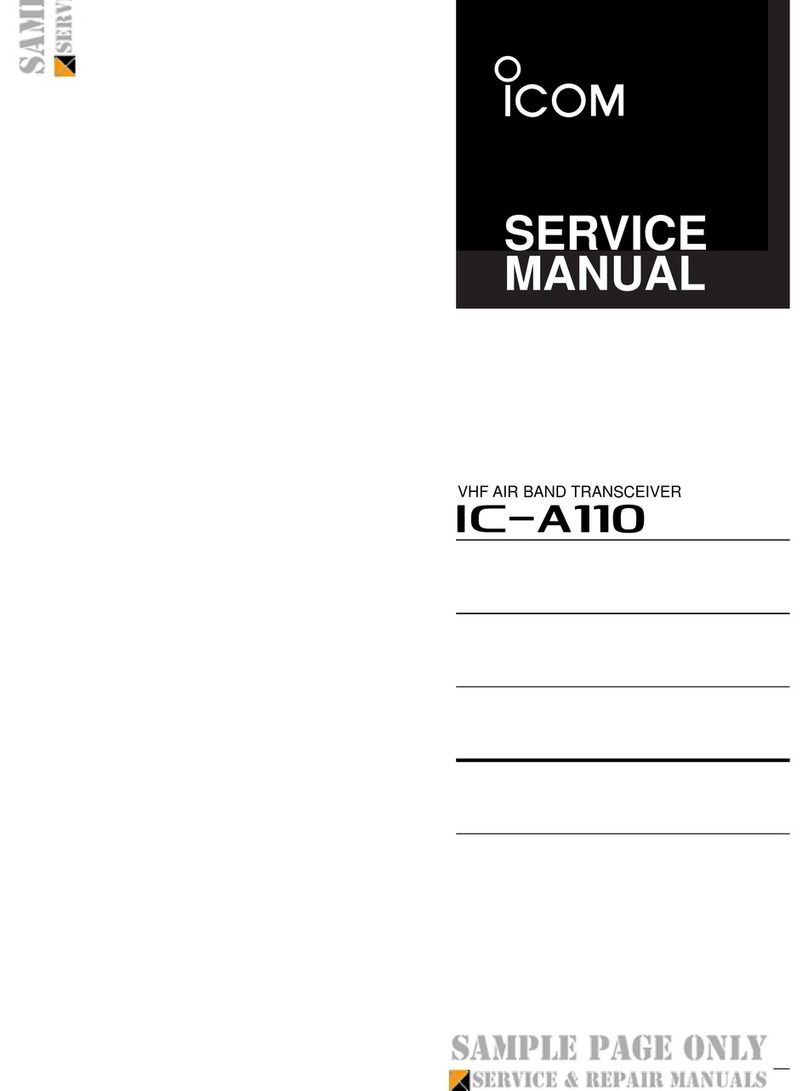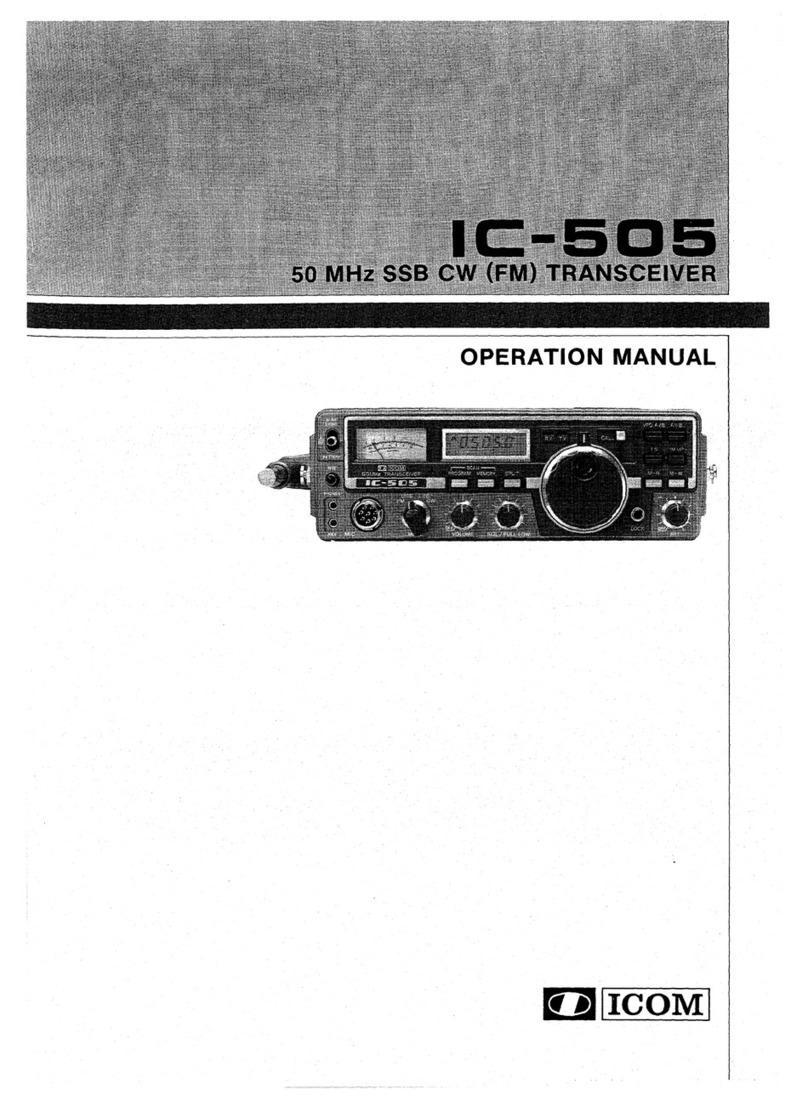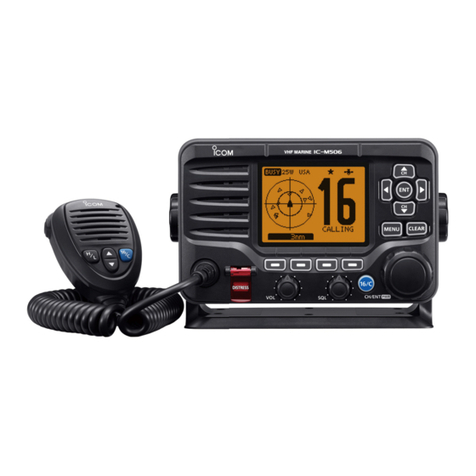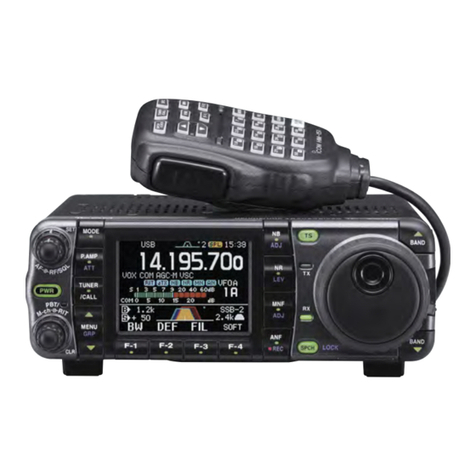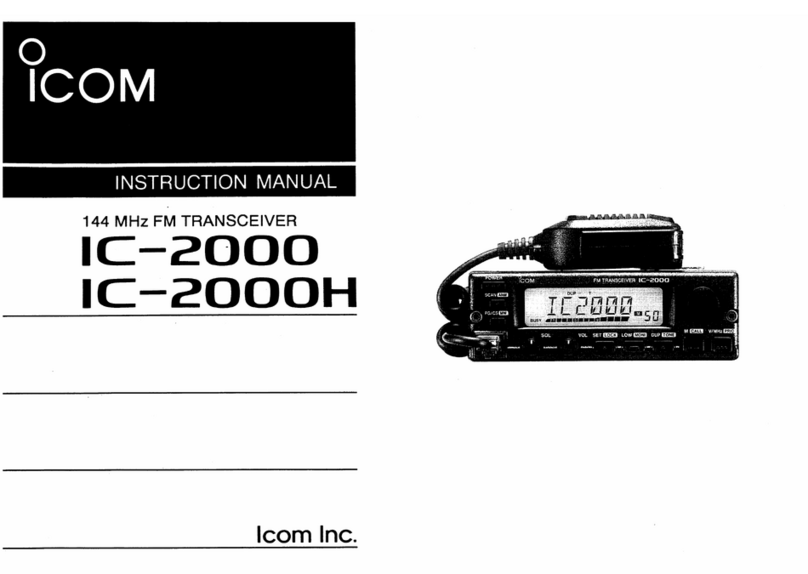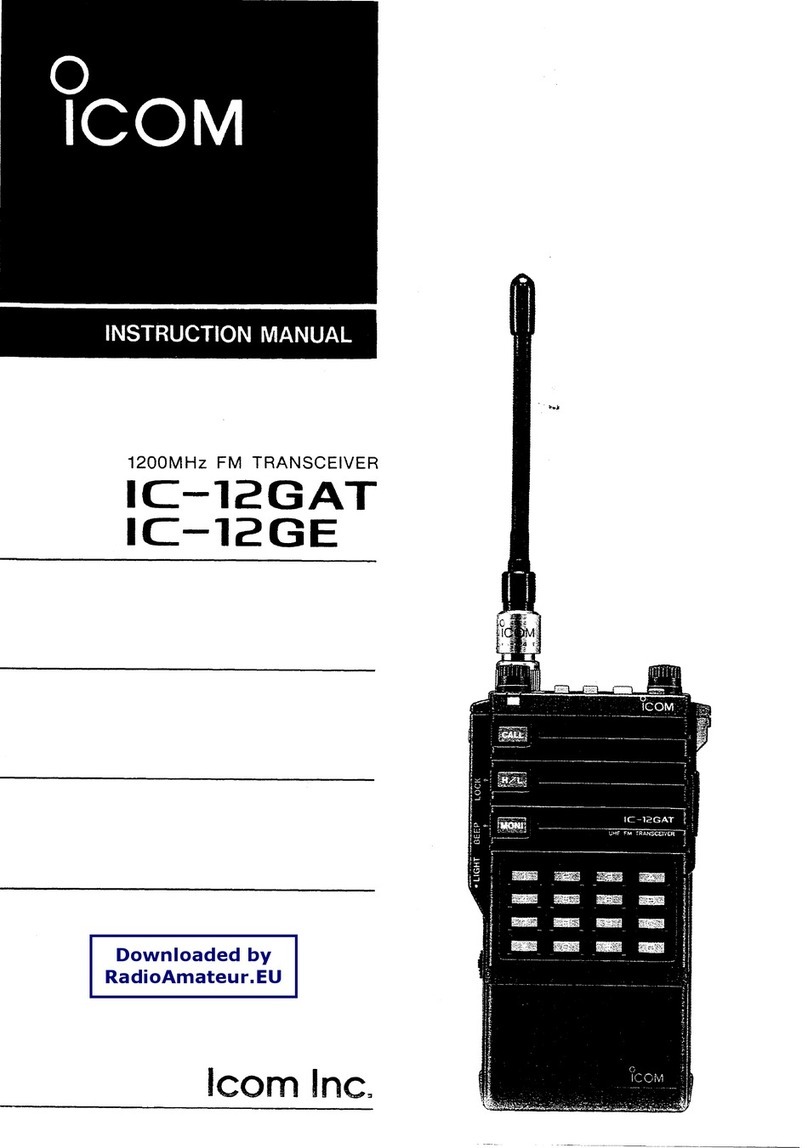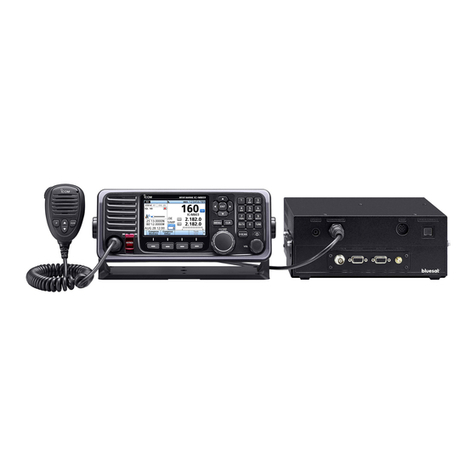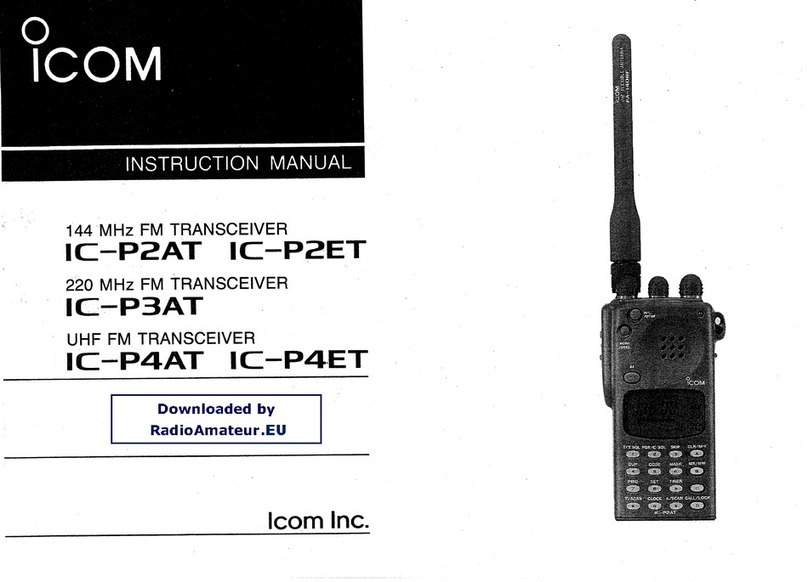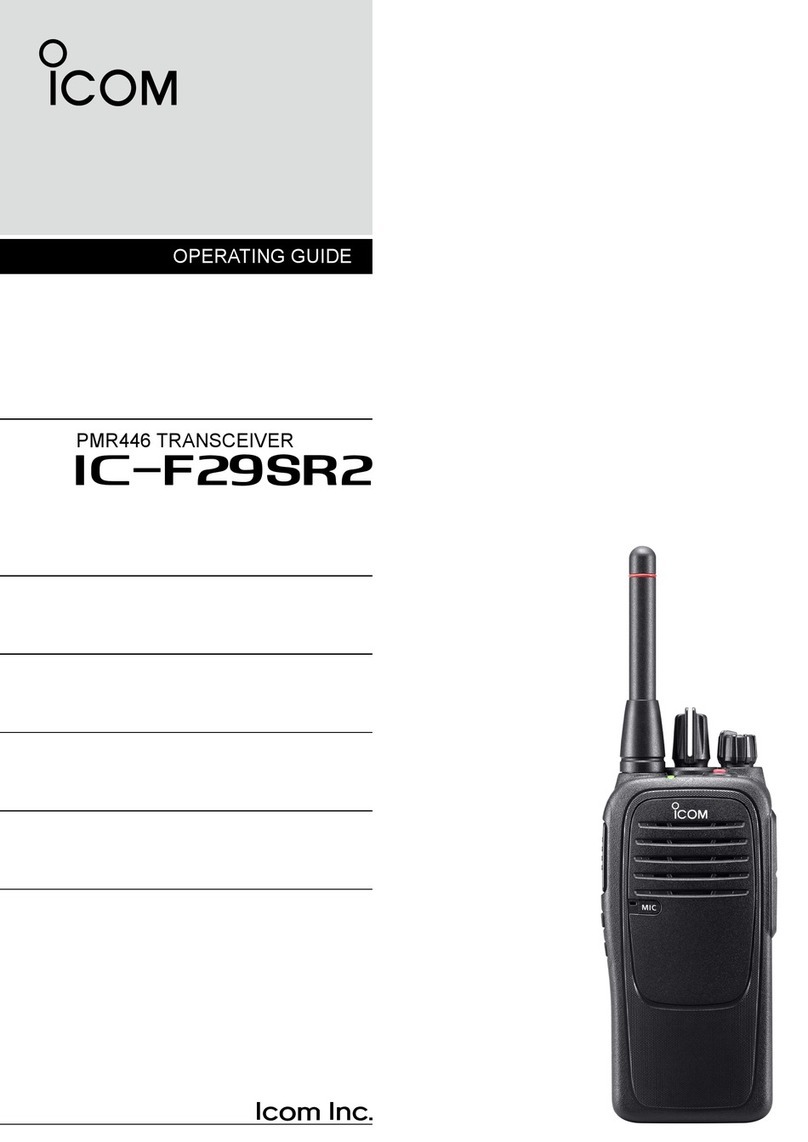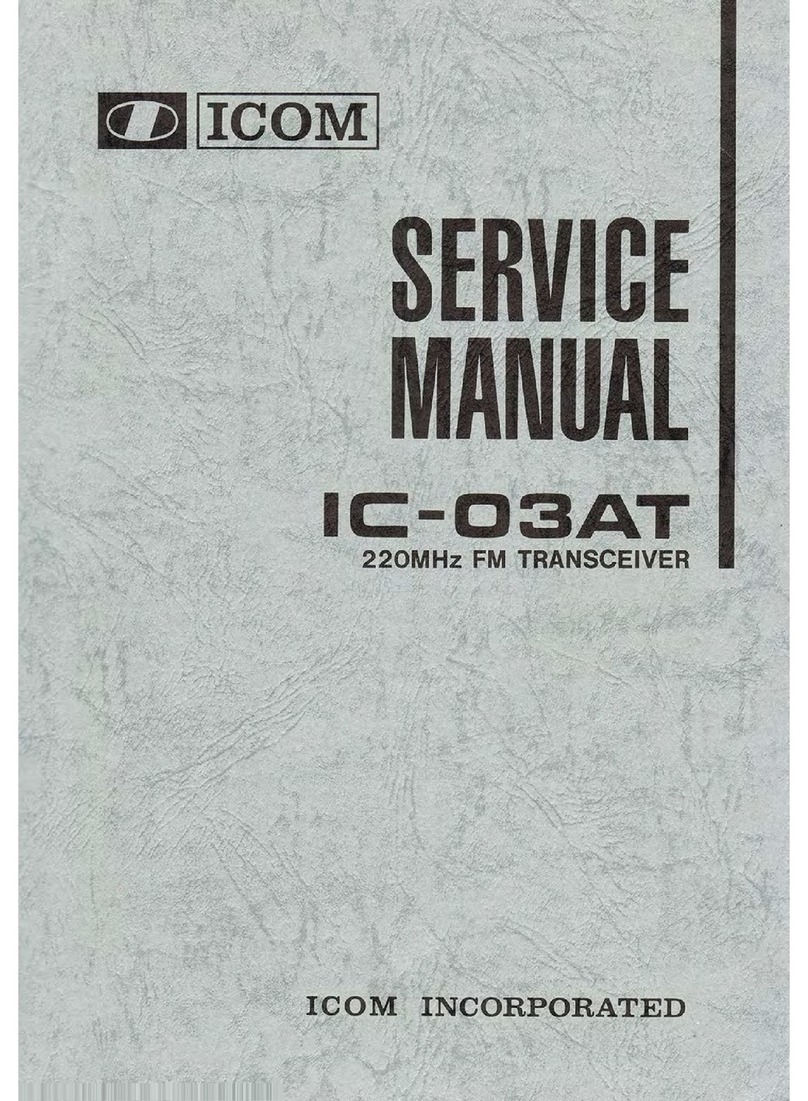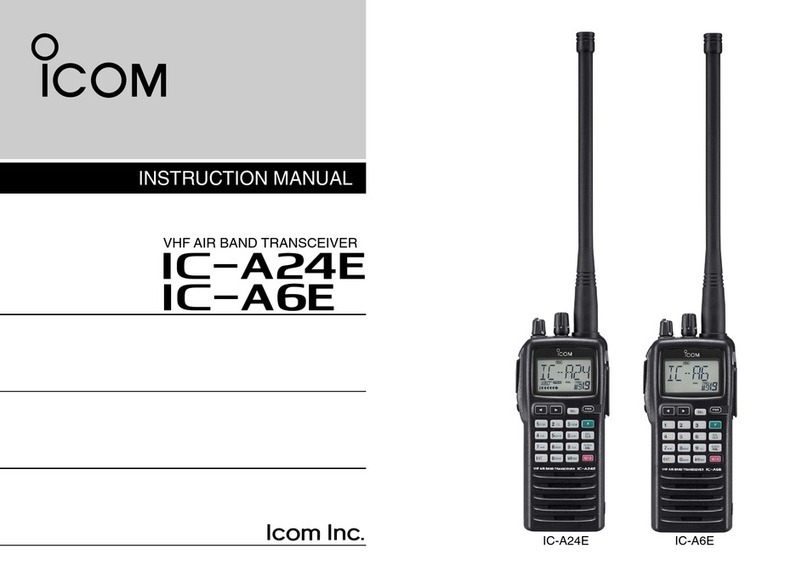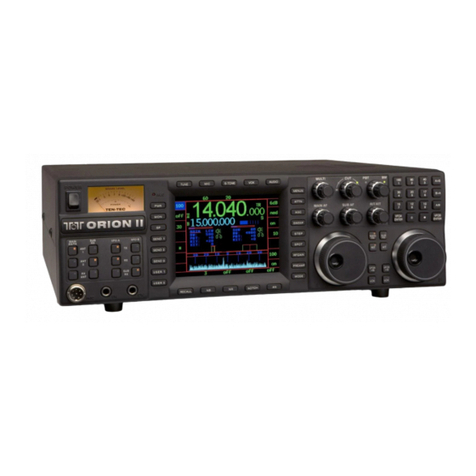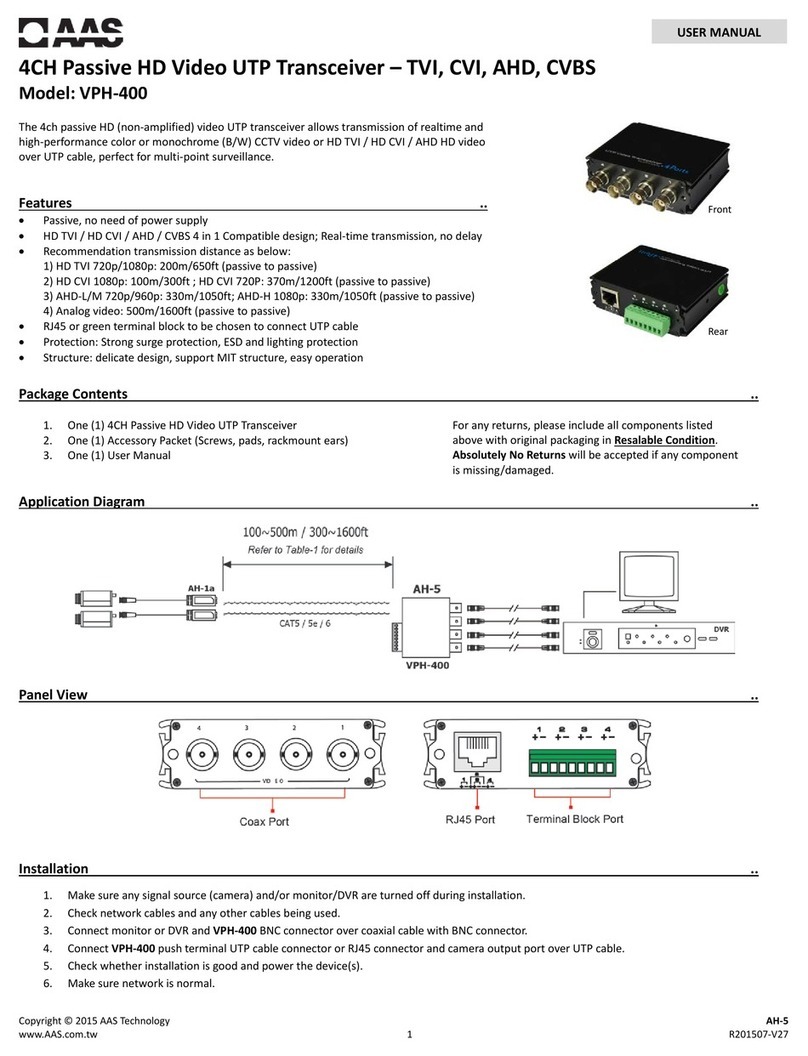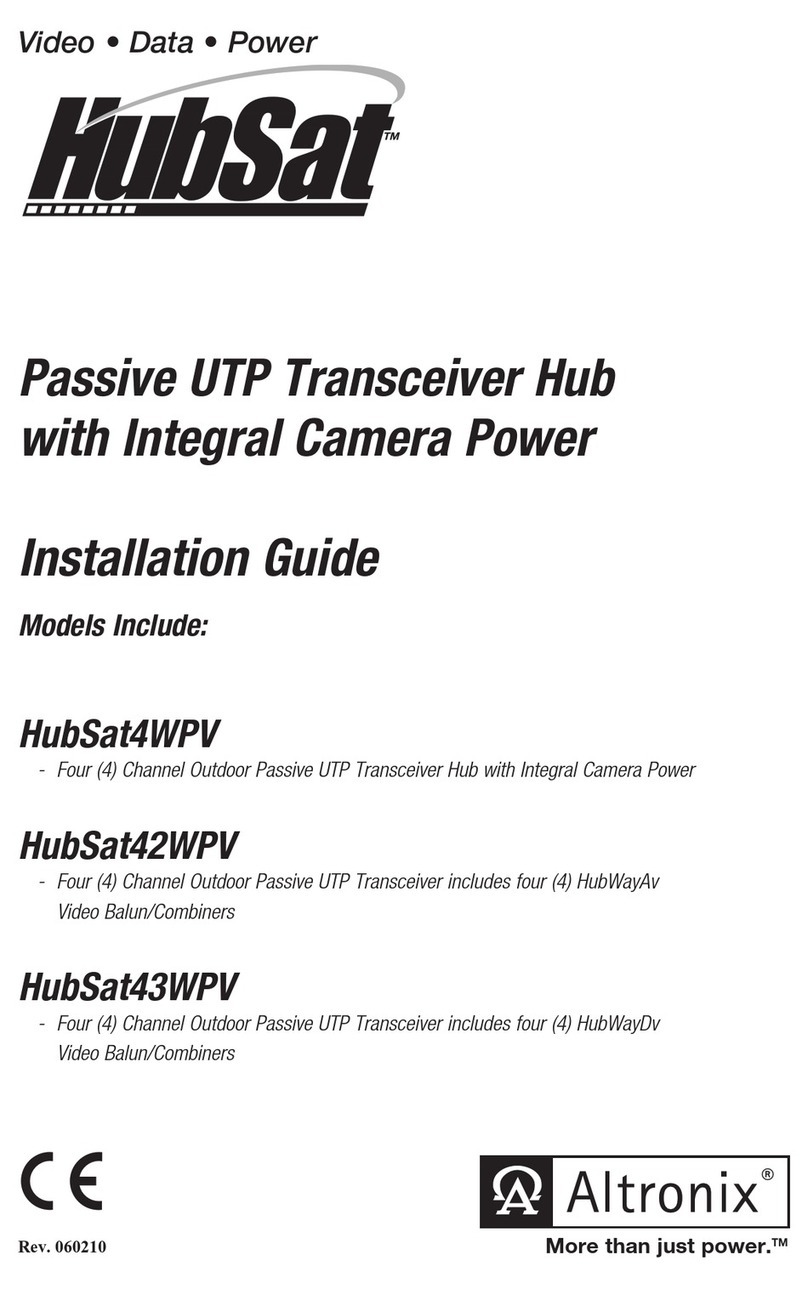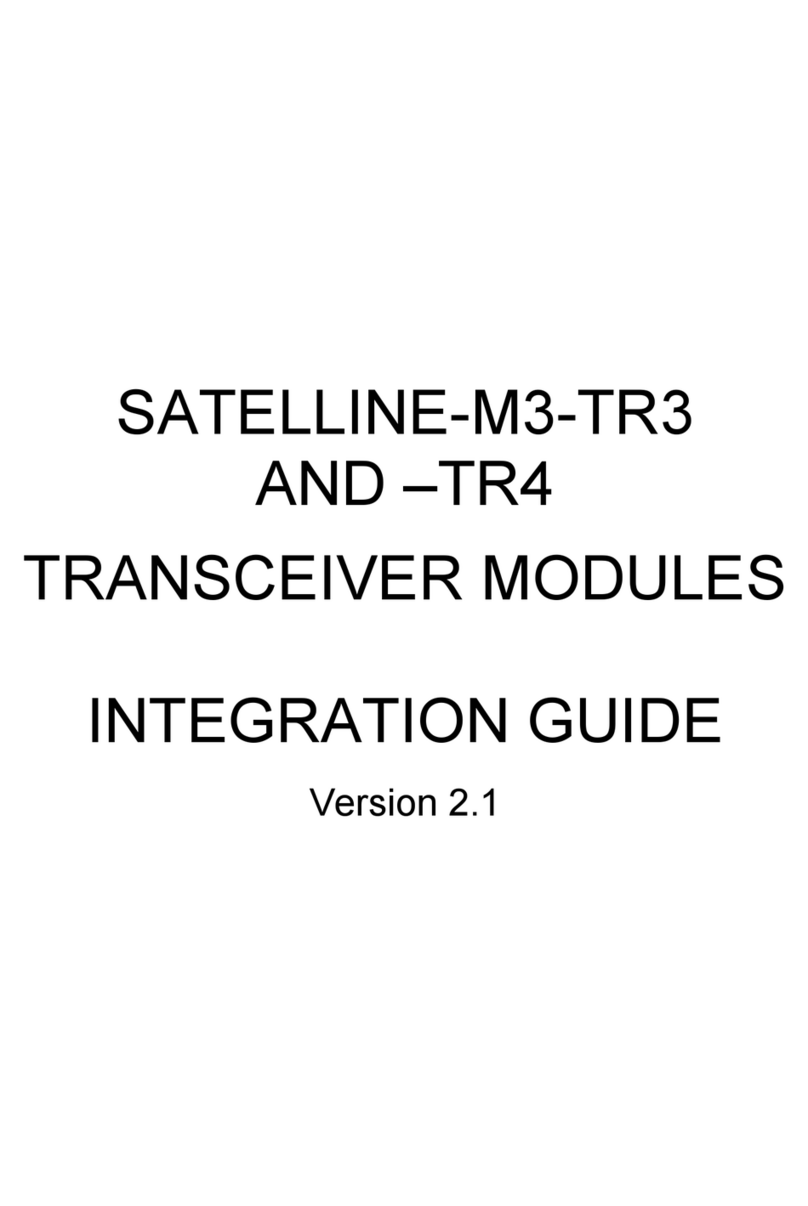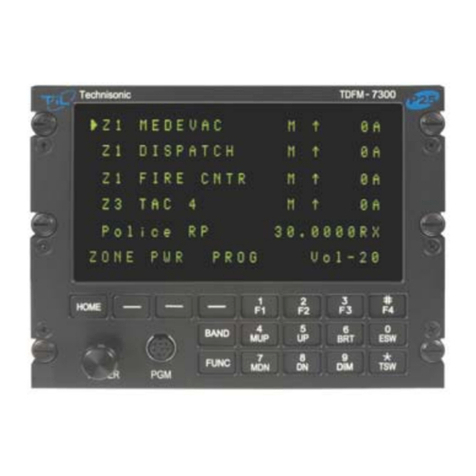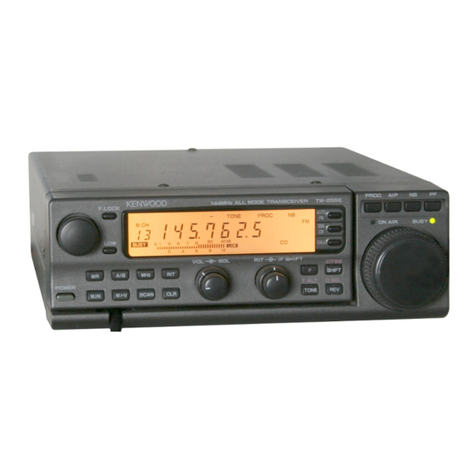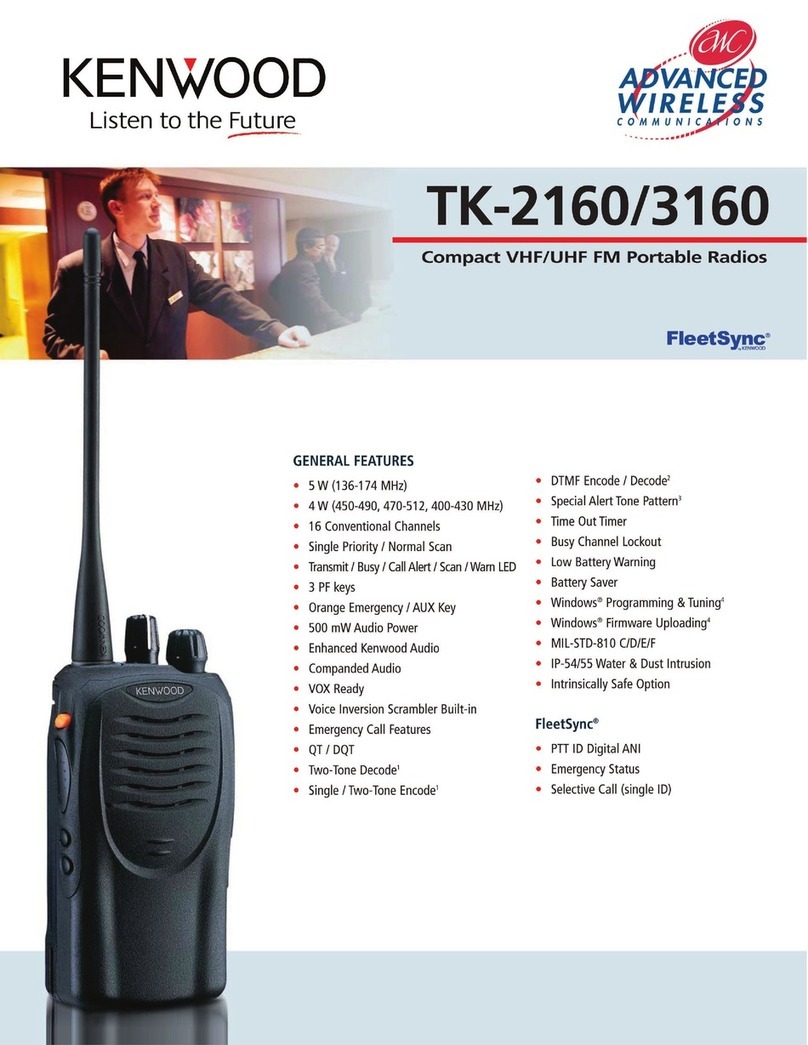Icom IC-M801GMDSS User manual

MF/HF MARINE TRANSCEIVER
INSTRUCTION MANUAL
iM801GMDSS

i
FOREWORD
Thank you for purchasing this Icom product. The IC-
M801GMDSS
MF
/
HF MARINE TRANSCEIVER
is designed
and built with Icom’s superior technology and crafts-
manship. With proper care, this product should provide
you with years of trouble-free operation.
We want to take a couple of moments of your time to
thank you for making the IC-M801GMDSS your radio of
choice, and hope you agree with Icom’s philosophy of
“technology first.” Many hours of research and develop-
ment went into the design of your IC-M801GMDSS.
D
FEATURES
❍Standard 4
×
8
″
remote controller
❍
Built-in DSC meets ITU Class A requirement
❍PC connection capability for remote control
IMPORTANT
READ THIS INSTRUCTION MANUAL
CAREFULLY before attempting to operate the
transceiver.
SAVE THIS INSTRUCTION MANUAL. This
manual contains important safety and operating in-
structions for the IC-M801GMDSS.
EXPLICIT DEFINITIONS
RWARNING HIGH VOLTAGE! NEVER at-
tach an antenna or internal antenna connector during
transmission. This may result in an electrical shock or
burn.
RWARNING! NEVER connect the transceiver to
an AC outlet directly. This may pose a fire hazard or
result in an electric shock.
RWARNING! NEVER mount the transceiver
main unit overhead. The weight of the unit is approxi-
mately 8.5 kg, but its apparent weight will increase
several fold due to wave shocks or vibration. The unit
must be mounted on a flat hard surface only.
RNEVER connect a power source of more than
31.2 V DC. This connection could cause a fire or ruin
the transceiver.
RNEVER place the transceiver where normal oper-
ation of the ship or vehicle may be hindered or where it
could cause bodily injury.
RNEVER let metal, wire or other objects touch any
internal part or connectors on the rear panel of the
transceiver. This may result in an electric shock.
DO NOT use chemical agents such as benzine or al-
cohol when cleaning, as they can damage the trans-
ceiver surface.
During maritime mobile operation, KEEP the trans-
ceiver and handset or microphone as far away as pos-
sible (at least 1 m) from the magnetic navigation com-
pass to prevent erroneous indications.
Use Icom handset or microphones only (supplied or op-
tional). Other manufacturer’s handset or microphones
have different pin assignments, and connection to the
IC-M801GMDSS may damage the transceiver.
AVOID using or placing the transceiver in areas with
temperatures below –15°C or above +55°C.
AVOID placing the transceiver in excessively dusty en-
vironments or in direct sunlight.
AVOID placing the transceiver against walls or putting
anything on top of the transceiver. This will obstruct
heat dissipation.
Place the unit in a secure place to avoid inadvertent
use by children.
BE CAREFUL! The transceiver main unit will become
hot when operating the transceiver continuously for
long periods.
PRECAUTIONS
WORD DEFINITION
RRWARNING Personal injury, fire hazard or electric
shock may occur.
CAUTION Equipment damage may occur.
NOTE
If disregarded, inconvenience only. No
risk or personal injury, fire or electric
shock.
Icom, Icom Inc. and the are registered trademarks of
Icom Incorporated (Japan) in the United States, the United
Kingdom, Germany, France, Spain, Russia and/or other
countries.
IBM is a registered trademark of International Business Ma-
chines.

ii
When your ship requires assistance, contact other ships and the Coast Guard by sending a distress call using dig-
ital selective calling on an emergency frequency.
IN CASE OF EMERGENCY
When immediate help is needed
qPush and hold [DISTRESS] for 5 sec. until the
short beeps become one long beep, to send the
distress call.
wAfter the appropriate traffic frequency is automati-
cally selected (after an acknowledgement call is
received), push and hold the PTT switch on the
handset or microphone and send the following in-
formation.
1. “MAY DAY, MAY DAY, MAY DAY.”
2. “THIS IS……………” (name of ship)
3. “LOCATED AT ……” (ship’s position)
4. Give the reason for the distress call.
5. Explain what assistance you need.
6. Give additional information:
• Ship type
• Ship length
• Ship color
• Number of people on-board
When potential problems exist
qPush [DSC] to select DSC watch mode, if neces-
sary.
wPush [MODE
SET
] to select DSC menu, rotate [CH]
to select “Geographical” then push [ENT].
eFollow the guidance displayed on the LCD (bottom
line), to set up the category, area, traffic and call-
ing frequencies with [CH], [ENT] and keypad.
rPush and hold [CALL] for 1 sec. until the short
beeps become one long beep.
tTransmit the appropriate information using voice.
• DSC equipped ships may monitor your transmission.
1
2
3
4
5
6
7
8
9
10
11
12
13
14
15
16
Quick Reference

TABLE OF CONTENTS
FOREWORD...............................................................i
IMPORTANT ............................................................. i
EXPLICIT DEFINITIONS .......................................... i
PRECAUTIONS ........................................................ i
IN CASE OF EMERGENCY .....................................ii
TABLE OF CONTENTS .......................................... iii
1 OPERATING RULES AND GUIDELINES ........... 1
2 PANEL DESCRIPTION ................................... 2–7
■Controller (RC-25GMDSS) .............................. 2
■Main unit ........................................................... 4
■Handset (HS-98) .............................................. 5
■LCD screen ...................................................... 6
3 SELECTING A CHANNEL/FREQUENCY ...... 8–9
■Selecting a channel .......................................... 8
4 RECEIVE AND TRANSMIT ........................ 10–12
■Basic voice transmit and receive .................. 10
■Function for transmit ...................................... 10
■Functions for receive ...................................... 11
■FSK operation ................................................ 12
5 CHANNEL NAME PROGRAMMING ................ 13
6 FREQUENCY PROGRAMMING ................ 14–15
■Frequency selection ....................................... 14
■Programming a frequency .............................. 15
7 DSC PREPARATION .................................. 16–17
■MMSI code programming ............................... 16
■Position and time programming ..................... 17
8 CALL PROCEDURE ................................... 18–29
■Distress call .................................................... 18
■Individual call ................................................. 20
■Group call ....................................................... 22
■Geographical call ........................................... 24
■Semi/Auto (telephone) call ............................. 26
■Position request call ....................................... 28
■Test call .......................................................... 29
9 WHEN RECEIVING A CALL ...................... 30–41
■To receive a DSC call ..................................... 30
■Received information ..................................... 31
■Deleting a memory ......................................... 31
■Distress call .................................................... 32
■Distress acknowledgement call ...................... 34
■Distress relay call ........................................... 35
■Polling call ...................................................... 36
■Semi/Auto (telephone) call ............................. 37
■Group call ....................................................... 38
■Geographical area call ................................... 38
■Position request call ....................................... 39
■Individual call ................................................. 40
10 MEMORY OPERATION .................................... 42
■Memory description ........................................ 42
■Memory writing ............................................... 42
■Memory reading/transmitting/deleting ............ 42
11 DSC MENU OPERATION ........................... 43–46
■General .......................................................... 43
■ID input ........................................................... 43
■Frequency input ............................................. 44
■Verifying self-ID .............................................. 45
■Self testing ..................................................... 45
■Telephone number input ................................ 45
■Memory reading/deleting ............................... 46
■Printing out the DSC memory contents .......... 46
12 SET MODE ................................................. 47–52
■Quick set mode .............................................. 47
■Initial set mode ............................................... 48
13 CONNECTION AND INSTALLATION ........ 53–66
■Supplied accessories ..................................... 53
■Basic connections ...........................................54
■Advanced connections ................................... 55
■Ground connection ......................................... 56
■Power source ................................................. 57
■Antenna .......................................................... 58
■Mounting ........................................................ 59
■Using the optional MB-108 ............................. 61
■Using the optional MB-75 ............................... 62
■Transceiver dimensions ................................. 63
■Fuse replacement .......................................... 64
■Connector information .................................... 65
14 SPECIFICATIONS ............................................ 67
15 OPTIONS .......................................................... 68
16 TEMPLATE ................................................. 69–72
■Remote controller (RC-25GMDSS) ................ 69
■Speaker (SP-24E) .......................................... 71
17 ANTENNA AND GROUNDING
CONSIDERATIONS ................................... 73–75
iii

1
1
OPERATING RULES AND GUIDELINES
1
Quick Reference
Before transmitting, monitor the channel you wish to
use so as to avoid interrupting transmissions al-
ready in progress.
• CALL PROCEDURE
Calls must be properly identified and the time limit
must be respected.
qGive your call sign each time you call another ship
or coast guard station. If you have no call sign,
identify the station by giving your ship name and the
name of the licensee.
wGive your call sign at the end of each transmission
that lasts more than 3 min.
eYou must break and give your call sign at least once
every 15 min. during long ship-to-shore calls.
rKeep your unanswered calls short, less than
30 sec. Do not repeat a call for 2 min.
tUnnecessary transmissions are not allowed.
• PRIORITIES
qRead all rules and regulations pertaining to priori-
ties and keep an up-to-date copy handy. Safety and
distress calls take priority over all others.
wFalse or fraudulent distress signals are prohibited
and punishable by law.
• PRIVACY
qInformation overheard but not intended for you, can-
not lawfully be used in any way.
wIndecent or profane language is prohibited.
• LOGS
qAll distress, emergency and safety calls must be
recorded in complete details. Log data activity is
usually recorded in 24 hour time. Universal Time
Coordinated (UTC) is frequently used.
wAdjustments, repairs, channel frequency changes
and authorized modifications affecting electrical op-
eration of the equipment must be kept in the main-
tenance log; entries must be signed by the autho-
rized licensed technician performing or supervising
the work.
• RADIO LICENSES
(1) SHIP STATION LICENSE
You must have a current radio station license before
using the transceiver. It is unlawful to operate a ship
station which is not licensed.
Inquire through your dealer or the appropriate govern-
ment agency for a Ship-Radiotelephone license appli-
cation. This government-issued license states the call
sign which is your craft’s identification for radio pur-
poses.
(2) OPERATOR’S LICENSE
A Restricted Radiotelephone Operator Permit is the li-
cense most often held by small ship radio operators
when a radio is not required for safety purposes.
The Restricted Radiotelephone Operator Permit must
be posted or kept with the operator. Only a licensed
radio operator may operate the transceiver.
However, non-licensed individuals may talk over a
transceiver if a licensed operator starts, supervises,
and ends the call and makes the necessary log en-
tries.
Keep a copy of the current government rules and reg-
ulation handy.

2
2
PANEL DESCRIPTION
■Controller (RC-25GMDSS)
qDISTRESS SWITCH [DISTRESS] (p. 18)
Push and hold for 5 sec. (approx.) to make a dis-
tress call.
wCALL SWITCH [CALL]
Push and hold for 1 sec. to start calling after DSC
contents are setup.
eCANCEL SWITCH [CANCEL]
Cancels a distress or DSC repeat call.
rHEADPHONE JACK [ ]
Accepts headphones.
• Output power: 2.5 mW with a 16 Ωload
(stereo/monaural)
tMICROPHONE CONNECTOR [MIC]
Accepts the supplied or optional microphone.
• See p. 68 for appropriate microphones.
• See p. 65 for microphone connector information.
yGROUP SELECTOR [GRP]
➥
Selects groups in 20 channel steps and ITU ma-
rine channel groups.
(p. 8)
➥Selects items during quick/initial set mode, etc.
uCHANNEL SELECTOR [CH]
➥Selects an operating channel within the selected
channel group such as ITU channels. (p. 8)
•User channels can be selected from 1 to 160 (max.)
in sequence regardless of the channel group.
➥Changes setting or value of the selected item
during quick/initial set mode, etc.
iRX/CLARITY SWITCH [RX
CLAR
]
➥After pushing [F], turns the clarity function ON
and OFF. (p. 12)
• [CH] is used for clarity control.
➥During DSC watch mode, enters RX memory se-
lect screen. (p. 31)
• [CH] is used for distress and other call selection.
oPOWER SWITCH [POWER]
➥Push to turn the power ON.
➥Push and hold for 1 sec. to turn the power OFF.
!0 TX/TRANSMIT FREQUENCY SWITCH [TX
TXF
]
➥
After pushing [F], displays the transmit fre-
quency, and opens the squelch. Checks and mon-
itors the transmit frequency while holding. (p. 10)
➥During DSC watch mode, enters TX memory se-
lect screen. (p. 42)
• [CH] is used for memory selection.
!1 VOLUME CONTROL [VOL]
Adjusts the audio output level.
• Audio does not come from the speaker when:
- The speaker OFF switch is turned ON.
- The squelch function is turned ON and no signal is
being received.
-Pick the handset up with speaker switch “ ” position.
(p. 5)
- During DSC watch mode.
DISTRESS
q
w
e
r
t
yuio!0 !1
!2
!3
!4!5!6!7Function display (pgs. 6, 7)

3
2
PANEL DESCRIPTION
2
!2 FREQUENCY/CHANNEL SWITCH [FREQ/CH]
➥Selects indication type: (p. 8)
When channel comment indication is ON;
switches channel comment indication ON and
OFF.
When channel comment indication is OFF;
switches transmit frequency indication ON and
OFF.
➥After pushing [F], enters channel name pro-
gramming mode, when channel comment indica-
tion is ON. (p. 13)
!3 KEYPAD
➥Inputs numeral “1” for channel number
input, etc.
➥Inputs “1,” “Q,” “Z,” “q,” “z” or space for
channel comment input.
➥After pushing [F], turns the noise
blanker function ON and OFF. (p. 11)
➥Inputs numeral “2” for channel number
input, etc.
➥Inputs “2,” “A,” “B,” “C,” “a,” “b” or “c” for
channel comment input.
➥After pushing [F], turns the squelch
function ON and OFF. (p. 11)
➥Inputs numeral “3” for channel number
input, etc.
➥Inputs “3,” “D,” “E,” “F,” “d,” “e” or “f” for
channel comment input.
➥After pushing [F], starts and stops the
scan function. (p. 9)
➥Inputs numeral “4” for channel number
input, etc.
➥Inputs “4,” “G,” “H,” “I,” “g,” “h” or “i” for
channel comment input.
➥After pushing [F], turns the external
speaker output ON and OFF. (p. 10)
➥Inputs numeral “5” for channel number
input, etc.
➥Inputs “5,” “J,” “K,” “L,” “j,” “k” or “l” for
channel comment input.
➥After pushing [F], turns the AGC OFF
function ON and OFF. (p. 11)
➥Inputs numeral “6” for channel number
input, etc.
➥Inputs “6,” “M,” “N,” “O,” “m,” “n” or “o” for
channel comment input.
➥After pushing [F], enters the RF gain ad-
justment mode. (p. 11)
➥Inputs numeral “7” for channel number
input, etc.
➥Inputs “7,” “P,” “R,” “S,” “p,” “r” or “s” for
channel comment input.
➥Inputs numeral “8” for channel number
input, etc.
➥Inputs “8,” “T,” “U,” “V,” “t,” “u” or “v” for
channel comment input.
➥After pushing [F], push for 1 sec. to print
out the DSC contents, etc. (p. 46)
➥Inputs numeral “9” for channel number
input, etc.
➥Inputs “9,” “W,” “X,” “Y,” “w,” “x” or “y” for
channel comment input.
➥Inputs numeral “0” for channel number
input, etc.
➥Inputs “0” and symbols (.,()*+-
/<=>@) for channel comment input.
➥After pushing [F], selects LCD backlight
brightness.
➥Fixes input of channel number and chan-
nel comment, etc.
➥When pushed for 1 sec., stores pro-
grammed frequency, operating mode and
memory comment into a channel.
➥Clears entered digits and retrieves the
previous frequency, channel or channel
names during setting.
!4 FUNCTION SWITCH [F]
After pushing, activates the secondary functions.
•“ ” appears when a secondary function can be ac-
cessed.
!5 TUNE/THROUGH SWITCH [TUNE
THRU
]
➥Starts tuning the connected AT-141
HF AUTOMATIC
ANTENNA TUNER
.
•“TUNE” appears when tuned.
•When the tuner cannot tune the antenna, the tuning
circuit is bypassed automatically after 15 sec.
➥After pushing [F], bypasses the connected an-
tenna tuner. (p. 12)
•“THRU” appears instead of “TUNE” indication.
!6 MODE/SET SWITCH [MODE
SET
]
➥Push to select an operating mode.
•J3E (USB), H3E (AM), LSB, J2B (AFSK), F1B (FSK),
and A1A (CW) modes are available, depending on
version or countries.
➥After pushing [F], enters quick set mode. (p. 47)
➥During DSC watch mode, enters DSC menu.
!7 DSC SWITCH [DSC]
Switches DSC watch mode and voice communica-
tion mode when pushed.

■Main unit
q
GROUND TERMINAL
IMPORTANT! Connects a ship’s ground. See
page 56 for details.
wDC POWER TERMINALS (pgs. 54, 57)
Accepts 24 V DC through the supplied DC power
cables.
Red terminal is for positive and black terminal is for
negative connection.
eDC ISOLATE SWITCH [DC ISOLATE] (p. 54)
Turns the transceiver’s main power ON and OFF.
rTUNER CONTROL SOCKET (pgs. 54, 58)
Connects a control cable to the antenna tuner, AT-
141.
A female connector kit is supplied for antenna tuner
connection.
tANTENNA CONNECTOR 1 (pgs. 54, 58)
Connects a 50 ΩHF band antenna via a 50 Ω
matched coaxial cable with a PL-259 plug for both
transmit and receive operation.
yPRINTER CONNECTOR (pgs. 55, 66)
Connects an IBM®centronics or compatible printer
to print out received DSC information automatically
or manually.
uREMOTE CONNECTOR [REMOTE] (pgs. 55, 65)
Connects to a PC via an RS-232C cable (D-sub 9-
pin) for remote control in the NMEA or RS-232C for-
mat.
iMODEM CONNECTOR [AF/MOD] (pgs. 55, 65)
Connects to an NBDP (Narrow Band Direct Print-
ing) or FAX system via a D-sub 9-pin cable.
oCONTROLLER CONNECTOR [CONTROLLER]
(p. 54)
Connects the supplied remote controller, RC-
25GMDSS.
!0 GPS CONNECTOR [GPS] (p. 55)
Input position and UTC data (NMEA0183 ver. 3.01
format), such as from a GPS receiver, etc., for set-
ting your positioning and time data automatically
without manual input for DSC operation.
!1 SPEAKER JACK [SP] (p. 54)
Connects the supplied external speaker, SP-24E.
!2 ANTENNA CONNECTOR 2 (p. 54)
Connects a 50 ΩHF band antenna via a 50 Ω
matched coaxial cable with a PL-259 plug for DSC
receiver.
IMPORTANT!: An HF antenna should be con-
nected to this antenna connector,
otherwise no DSC call can be re-
ceived.
NMEA IN (+)
RCA
NMEA IN (–)
4
2PANEL DESCRIPTION
qwe
rtyuio
!0!1
!2
✔For detailed “ANTENNA AND GROUNDING CON-
SIDERATIONS,”see pages 73 to 75.

1-1-32 Kamiminami, Hirano-ku, Osaka 547-0003, Japan
A-6473H-1EU-0a
Printed in Japan
© 2006-2014 Icom Inc.
Other manuals for IC-M801GMDSS
2
Other Icom Transceiver manuals
Popular Transceiver manuals by other brands

Yaesu
Yaesu FTV-700 instruction manual
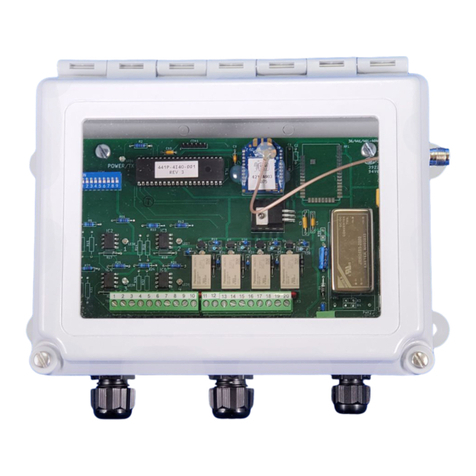
BWI Eagle
BWI Eagle AIR-EAGLE XLT PLUS Product information bulletin

Kenwood
Kenwood VHF P25 Transceiver TK-5710 instruction manual
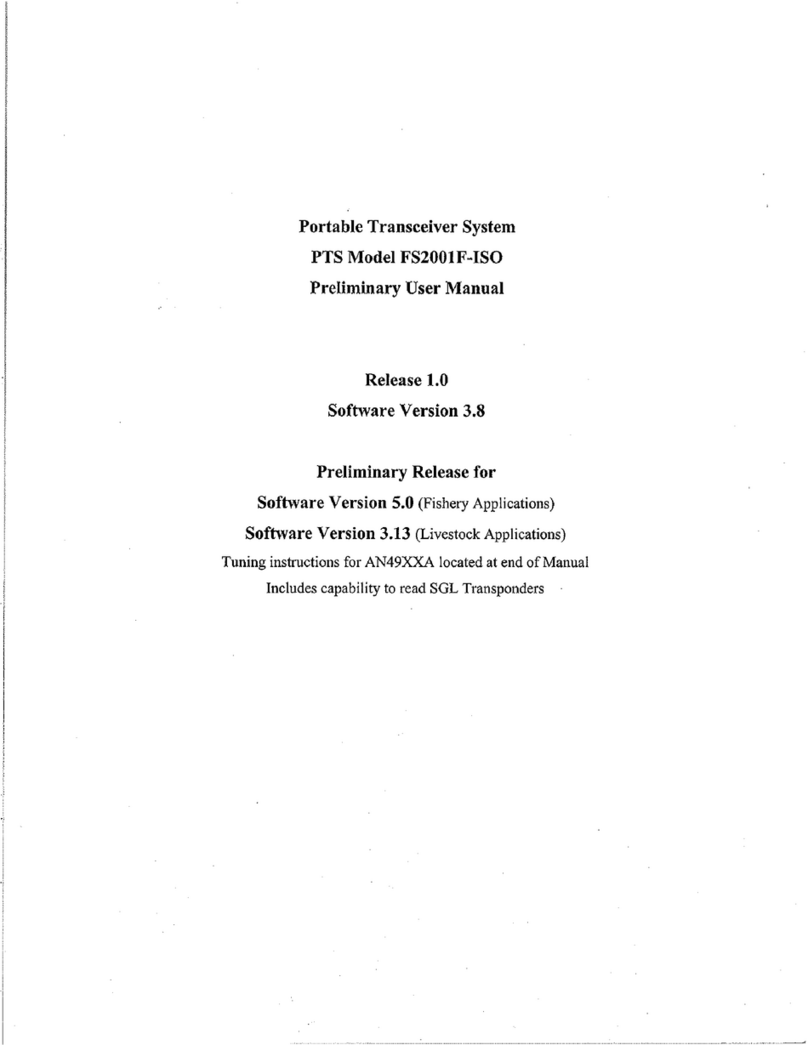
Schluter Systems
Schluter Systems FS2001F-ISO user manual
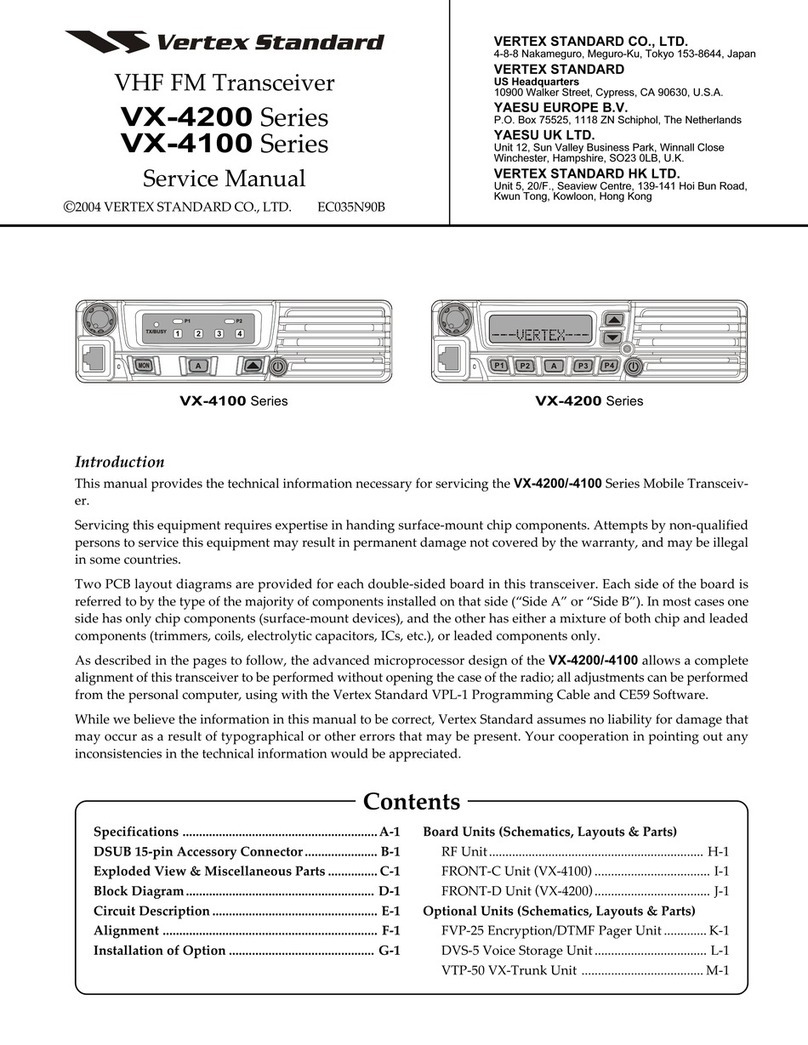
Vertex Standard
Vertex Standard VX-4200 Series Service manual
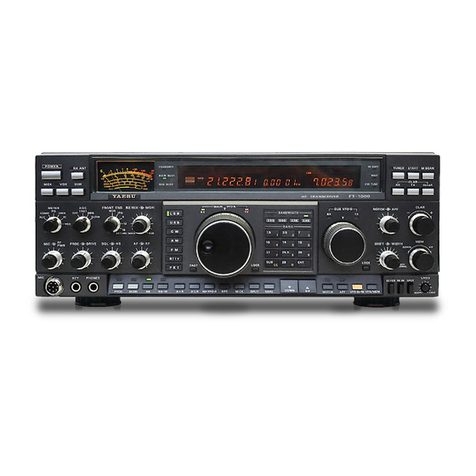
Yaesu
Yaesu FT-1000 operating manual
